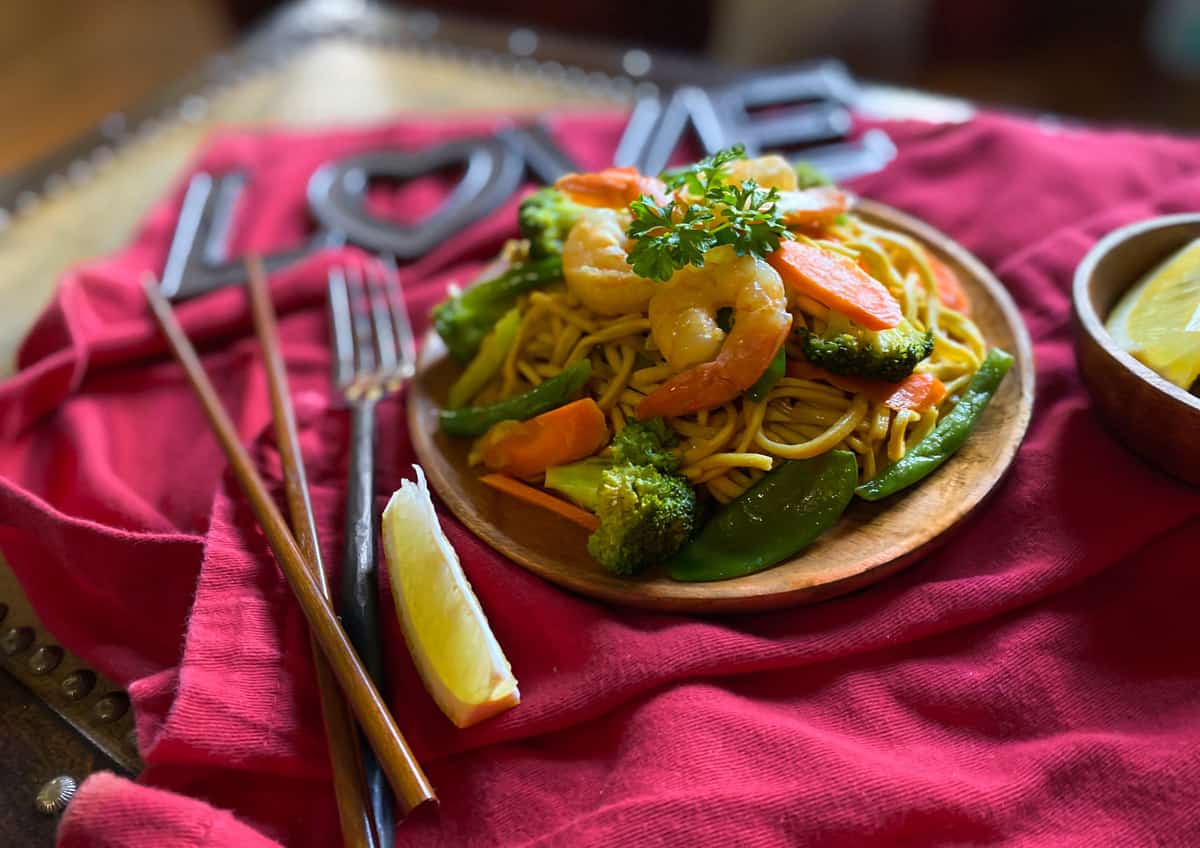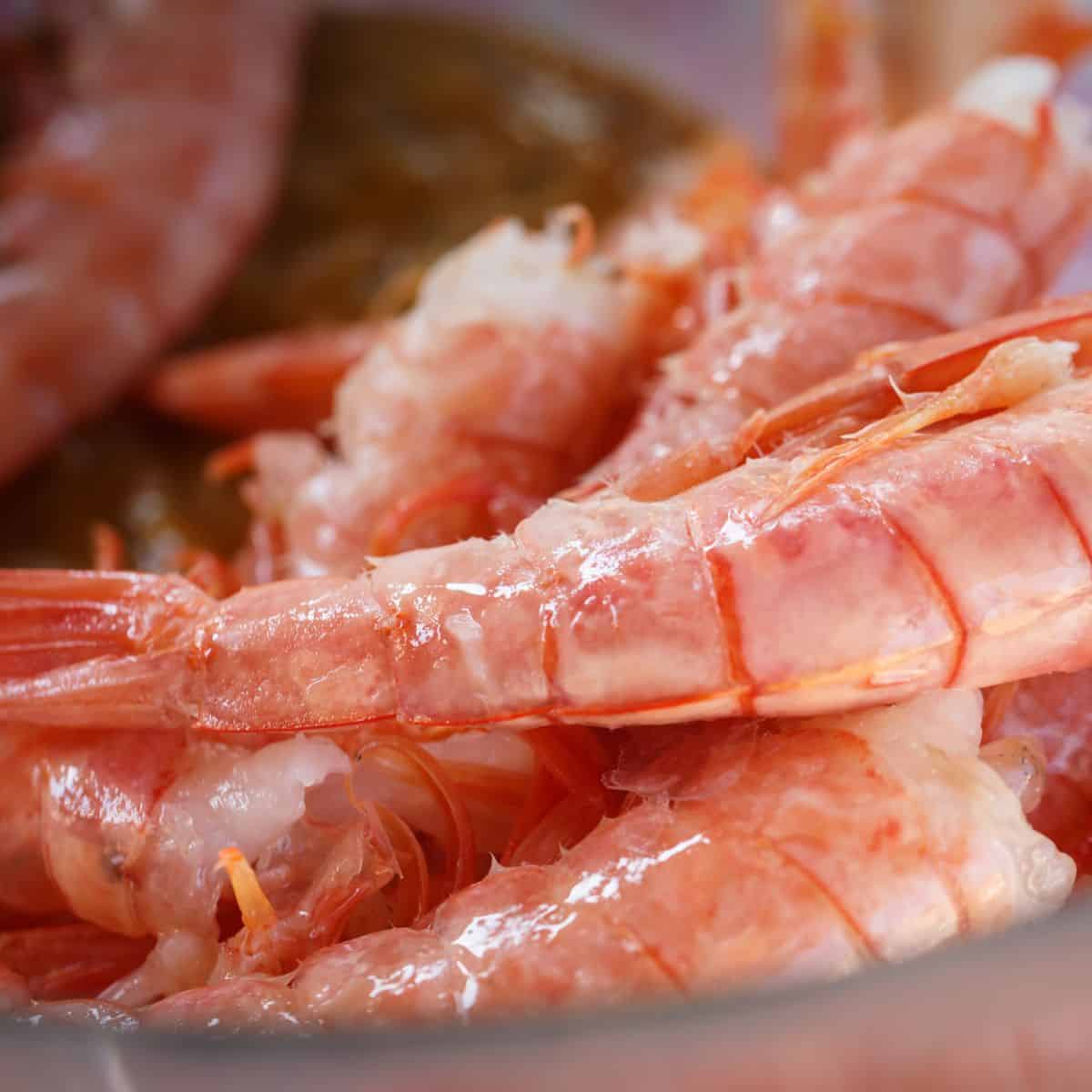Cooked shrimp is safe to eat within two hours of cooking time at room temperature. However, there are other ways to store them properly so they can last even longer. If you keep reading, I’ll tell you how to store them best in the fridge or freezer so you can have them on hand quickly for quick meal prep.
Shrimp is a favorite seafood for many Its versatility allows it to be used in appetizers, main dishes, soups, salads, and more But like any perishable food, proper storage is crucial to prevent bacterial growth and foodborne illness. So how long can cooked shrimp sit out before it becomes unsafe to eat?
This article will provide a detailed overview of cooked shrimp storage guidelines. We’ll cover room temperature times, refrigerator shelf life, freezing options, and more. Read on to learn how to store cooked shrimp properly and enjoy it safely.
Room Temperature Storage Time for Cooked Shrimp
Cooked shrimp should not sit out at room temperature for more than 2 hours total. Bacteria grow rapidly on cooked shellfish like shrimp when left between 40°F and 140°F.
Here are key room temperature guidelines:
- Discard shrimp left out more than 2 hours.
- 1-2 hours is the maximum safe timeframe.
- Keep cooked shrimp on ice if serving hot at a buffet.
- Store leftovers promptly in the refrigerator.
- When reheating, do so just before serving.
If shrimp sits out too long, it can lead to foodborne illness. Symptoms include nausea, vomiting, diarrhea, and abdominal cramps. So it’s essential to follow the 2 hour room temperature rule.
Why Shouldn’t Shrimp Sit Out Overnight?
It is never safe to leave cooked shrimp sitting out overnight. Refrigeration is the only way to control bacterial growth over longer periods.
Here’s why overnight room temperature storage is unsafe:
- Bacteria multiply exponentially when food is above 40°F for multiple hours. This makes overnight sitting hazardous.
- Shrimp is a high risk food for bacterial contamination. The moist environment is ideal for rapid pathogen growth.
- Common bacteria found in spoiled shrimp includes Salmonella, Staphylococcus aureus, Listeria, and E. coli. These can all cause severe food poisoning.
- Pre-formed toxins from bacteria can’t be destroyed through cooking or reheating once shrimp has sat out overnight.
Consuming shrimp left out overnight can lead to vomiting, diarrhea, abdominal pain, and even hospitalization in severe cases Refrigeration is the only way to control bacterial growth for longer storage
Proper Refrigerator Storage Time for Cooked Shrimp
Cooked shrimp that has been promptly refrigerated after cooking or serving can safely be stored for 3-4 days.
Follow these tips for fridge storage
- Place shrimp in a sealed container or resealable bag.
- Store on a lower shelf away from fresh produce to avoid cross contamination.
- Cold air needs to properly circulate, so don’t overcrowd the container.
- Use shrimp within 3 days for peak quality and safety.
- Discard any with an unpleasant odor after refrigeration.
The cold temperatures of the refrigerator (below 40°F) slow down bacterial growth, allowing safe storage for a few days.
Can Previously Refrigerated Shrimp Sit Out Later?
Cooked shrimp that has been properly stored in the refrigerator cannot safely sit out at room temperature again. Any bacteria present will begin rapid growth again when the shrimp is taken out of the fridge.
Previously refrigerated shrimp should:
- Remain refrigerated until ready to eat.
- Be reheated immediately before serving if chilled.
- Never be left out on the counter after refrigeration.
- Be discarded if left out more than 2 hours after refrigeration.
Refrigerating cooked shrimp does not reset the clock for safe room temperature storage times.
Can Cooked Shrimp Be Frozen?
Freezing is a safe long-term storage option for cooked shrimp. It stops bacteria growth by lowering the temperature below what pathogens can thrive in.
Here are some freezing guidelines:
- Cool shrimp thoroughly in the fridge before freezing.
- Package in an airtight container or freezer bag.
- Remove as much air as possible to prevent freezer burn.
- Label with date and contents.
- Store no longer than 3 months for best quality.
- Thaw in the refrigerator, not on the counter.
Properly frozen shrimp stored at 0°F or below will keep safely for months. Freezing prevents bacterial growth.
How to Know if Cooked Shrimp Has Spoiled
With improper storage, bacteria can multiply, leading to spoiled shrimp. Here are the signs to look for:
- Noticeable change in texture – becomes mushy or slimy
- Unpleasant fishy or ammonia odor
- Discoloration to an unnatural gray, yellow, or blue hue
- Mold growth – this appears fuzzy or fuzzy
- Unusual bubbling or fizzing from bacteria
If shrimp exhibits any signs of spoilage, it is unsafe to eat. Always discard cooked shrimp at the first signs that it has gone bad. Don’t rely on smell or taste tests.
Safe Defrosting Methods for Frozen Shrimp
Frozen cooked shrimp needs to be defrosted using safe methods before use. Here are some recommended ways to safely thaw shrimp:
- In the refrigerator: This gentle method takes about 12 hours for a 1 lb package.
- In cold water: Submerge the frozen package in a leakproof bag under cold running water. Change the water every 30 minutes until thawed. Takes about 1-2 hours for a 1 lb package.
- As part of cooking: Add frozen shrimp directly to soups, sauces, or casseroles to thaw and cook.
- In the microwave: Use the defrost setting in 1 minute increments, checking frequently.
Always cook thawed shrimp immediately rather than leaving it to sit out. Safe defrosting prevents bacterial growth.
Can Leftover Cooked Shrimp Be Reheated?
Previously cooked shrimp stored properly in the refrigerator can be safely reheated one time. Follow these reheating guidelines:
- Only reheat shrimp that has been continually refrigerated.
- Use shallow containers and stir shrimp for even heating.
- Cook on the stove, in soups/sauces, or in oven dishes to 165°F.
- Bring sauces with shrimp to a boil when reheating.
- Only reheat the amount that will be immediately consumed.
- Do not reheat more than once.
Proper reheating helps destroy any bacteria that may have proliferated during storage. Just be sure not to reheat shrimp that has sat out.
Storing Shrimp for a Crowd
When handling larger amounts of cooked shrimp for events, be extra diligent with time and temperature control.
- Cook shrimp as close to serving time as possible.
- Never let cooked shrimp sit out for more than 2 hours.
- Keep hot shrimp in a warmer or on a stovetop rather than room temp.
- Provide ice baths or ice wands to cool shrimp for later refrigeration.
- Store leftovers in smaller containers so they chill rapidly.
Large volumes of shrimp can become safety hazards if not promptly cooled and refrigerated. Follow safe handling procedures when cooking for crowds.
The Takeaway on Cooked Shrimp Storage
Cooked shrimp can harbor dangerous bacteria if left out at room temperature. Be sure to refrigerate leftovers within 2 hours and never let shrimp sit overnight on the counter. Refrigeration keeps shrimp safe for 3-4 days, while freezing stops bacterial growth for even longer storage. Reheat refrigerated leftovers just once. Following safe shrimp storage guidelines allows you to enjoy this tasty seafood while avoiding the risk of foodborne illness.

How Long Does Cooked Shrimp Stay Fresh in the Fridge
Cooked shrimp lasts 3-4 days in the fridge. Put cooked shrimp right away in a container that won’t let air in so you can have them on hand for a quick weeknight dinner.
If you only have 30 minutes to cook a tasty, low-calorie dinner, this Pancit Canton with Shrimp and Vegetables recipe is just what you need! Just toss the shrimp with the vegetables, and if you want to save even more time, use frozen vegetables!

How to Thaw Frozen Cooked Shrimp
The safest and best way to thaw frozen shrimp is to put them in the fridge and let them slowly defrost for eight hours or overnight.
Cold water method: If you need to thaw seafood quickly, you can either put it in a plastic bag and put it in cold water, making sure to change the water every 30 minutes.
Microwaving: If the food will be cooked immediately, microwaving the shrimp is another alternative for thawing. Place the shrimp in a microwave-safe container and set the microwave to the “defrost” setting. I personally don’t think it’s a good idea to thaw cooked shrimp in the microwave because the shrimp can get tough and rubbery.

Having cooked fresh shrimp on hand is a great way to make healthy and tasty meals for your family now that you know how to store cooked shrimp properly.
Listed below are different ways how you can prepare delicious meals using shrimp.
How to Cook Already Cooked Shrimp Safely & to Retain Flavour?
How long can cooked shrimp stay out?
Whether you’re cooking shrimp for a meal or just preparing a quick snack, you should know how long cooked shrimp can stay out. Most people have no idea how long cooked shrimp is safe to eat. Shrimp can be kept at room temperature for up to two hours before it needs to be refrigerated.
What are the side effects of eating shrimp?
Shrimp allergy can be identified from signs and symptoms that appear after consuming shrimp or smelling it, such as itching, the appearance of red plaques on the skin, swelling in the face, especially in the eyes and mouth, and in the throat creating the feeling of a lump in the throat.
Can you leave cooked shrimp out overnight?
No, it is not safe to leave cooked shrimp out overnight. As mentioned earlier, the maximum time that cooked shrimp should be left out at room temperature is 2 hours. After that, bacteria can proliferate, increasing the risk of foodborne illnesses. What happens if I accidentally eat shrimp that was left out for too long?
How long can you keep cooked shrimp in the fridge?
Do not leave it on the counter, even for a short amount of time. You will increase the speed with which it decays, so it is best to put it straight into the fridge. You can store cooked shrimp in an airtight container in the fridge for up to four days, as long as it has been handled properly.
